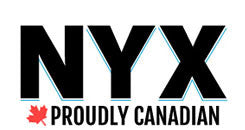THE FEDERAL VAPE TAX : THE UPCOMING FUTURE OF VAPING IN CANADA
Posted on 23 November 2022

There are some big changes coming up again in the near future for vaping in Canada. This time, it comes in the form of a Federal Vape Tax, set to take effect starting October 1st 2022. While that may come as a surprise to some, the Canadian Government has been considering this vaping product taxation since its proposal last year, announced under Budget 2021. The Government proposes that an excise duty for vaping products would help to raise revenues. Moreover, the Government reasons that the taxation could be effective in reducing the consumption of vaping products, especially amongst youth. Rightfully, youth vaping should be discouraged and condemned. But it must also be acknowledged that vaping is intended for adult use only, and provides adult smokers significant reduced risk for nicotine consumption.
Unfortunately, like the many other strict regulations targeting vaping and vape products over recent years, this Federal Vape Tax has already been mostly finalized. And with the implementation date coming up in less than three weeks, many of you may have questions. What will this mean for the upcoming future of vaping for Canadians?
According to the Canadian Government website, this federal vape tax will be introduced in a framework and apply to vaping substances produced in Canada or imported into the country intended for use in a vaping device, whether or not they contain nicotine. In simpler terms, this means that any vaping products containing e-liquid will bear an excise tax burden, inevitably affecting the cost of bottled e-liquid products and prefilled vaping devices and cartridges, including disposable vaping products, STLTH pods and other similar products.
Any e-liquid containing vaping products will see a federal tax amount of $1.00 for every 2 mL of the first 10 mL of e-liquid in any sealed container, and $1.00 for every 10 mL of additional e-liquid in the same container. For pre filled vape cartridges, each individual cartridge or pod will be counted as an individual container. Because this tax would be calculated based on the volume of e-liquid in each individual pod rather than the total volume of e-liquid in the package, then a tax amount of $1.00 will apply per pod. Tax amounts will be added to the base cost of the products before provincial sales tax.

On top of this federal tax rate, provinces and territories who are interested can participate in a coordinated tax framework with the federal government to add an additional rate. A combined federal and provincial tax rate for vaping products would result in even higher prices for consumers, and potentially culminate a heavier tax on e-cigarette products than we have seen with traditional cigarettes. Though the Government’s aim is to discourage youth vaping through increased prices on vaping products, this tax poses a conflict for adult smokers and vapers who utilize vaping as a tobacco harm reduction tool. With a hefty markup on the pricing of vaping products, adult smokers who have made their switch to vaping may feel discouraged by the increasing cost; meanwhile those that may be considering a switch to vaping may be deterred altogether. A small positive in all of this is that hardware products sold without e-liquid will not be affected by the vaping product excise tax.
Apart from the unfavourable implications on the consumer side, the effects of the excise duty will extend to manufacturers, suppliers and retailers as well. Similar to cigarettes and cannabis products sold in Canada, it will soon be mandatory for packaging on vaping products to include a tax stamp to indicate that duties have been paid. That’s because manufacturers and importers of vaping products, including any vape shops that mix or produce vaping products for sale will be required to obtain a vaping product license from the Canadian Revenue Agency and register for the vaping stamping regime as part of this new excise duty framework. Fortunately, individuals who mix e-liquids for their own personal use would not have to register or acquire a license. However, vape shops that mostly rely on the sales of in-house mixed e-liquids may find themselves with increased business costs.
We will be seeing an expensive impact on the pockets of vapers with this upcoming excise duty for vaping products; especially with the potential for a provincial tax rate in addition to an initial federal rate. Despite the opposing arguments and views of many former smokers and harm reduction and vaping advocate groups; that vaping offers adult smokers a nicotine consumption alternative with substantially reduced risk, the Canadian Government continues to deem vaping as risky and harmful.
Just in the last year, Health Canada began to enforce the Vaping Products Labeling and Packaging Regulations, and the Nicotine Concentration in Vaping Products Regulations (NCVPR). These regulations mandated child-resistant refillable tanks, changes to vaping product labeling and advertising, and set a maximum nicotine concentration of 20 mg/mL for vaping products sold in Canada. Proposed regulations to restrict flavours in vaping products to just tobacco and menthol/ mint flavours have also been published by Health Canada in the last year.
While the Government continues to impose these harsh restrictions to curtail youth vaping, they inadvertently affect the adult smokers who choose vaping products over their more harmful alternative. Although youth vaping is an issue that the Government, health agencies, and the public should be concerned with, we should also recognize how these policies increasingly limit choices for adult smokers.



